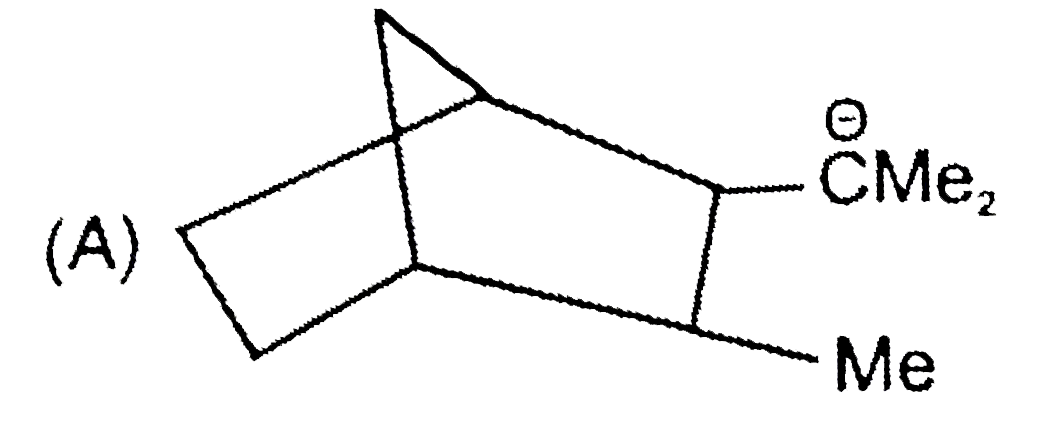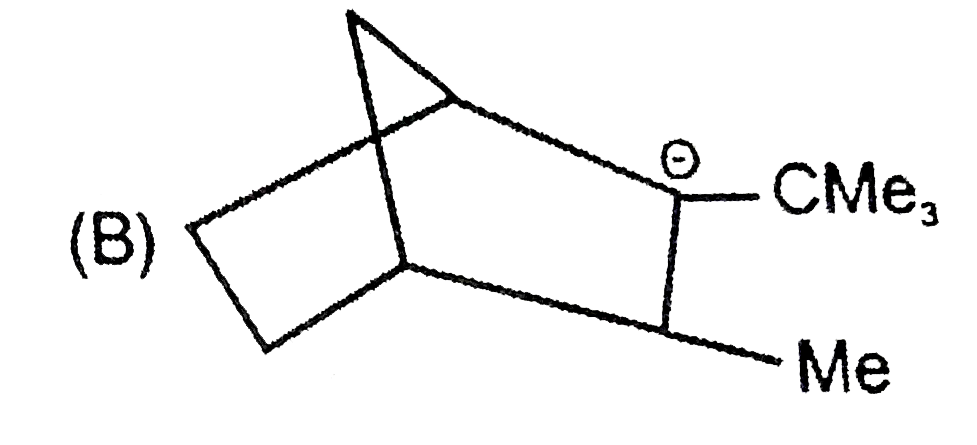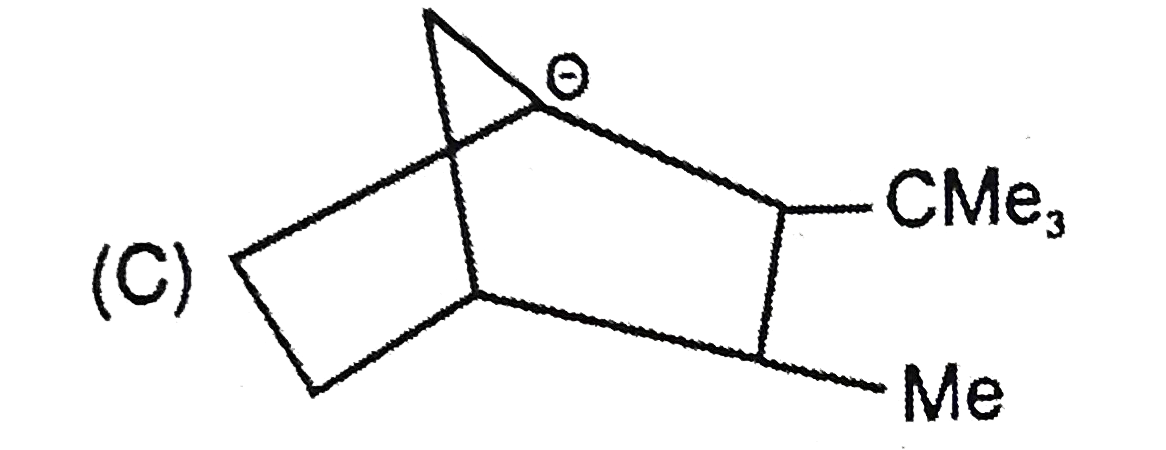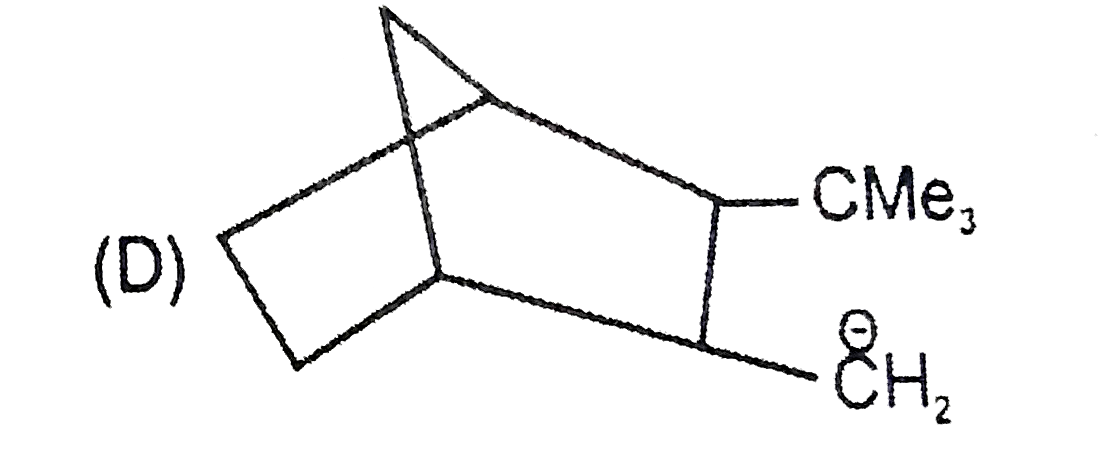Reaction intermdiates are short lived species and are highly reactive. They are formed by heterolytic and homolytic bond fission. There are various types of reaction intermediates in which the most important are carbocation , carbanion and free radical.
Carbocation is an organic species in which carbon have positive charge and six electrons in its outermost shell. The stability of carbocation can be increased by positive inductive effect, hyperconjugation and delocalisation. If -atom with respect to carbocation has one or more lone pair of electron then lone pair of electron strongly stabilises the carbocation due to octet completion.
Species in which carbon have negative charge is called carbanion. Carbanion carries three bond pairs and one lone pair. The stability of carbanion can be increased by negative inductive effect, negative mesomeric effect and delocalisation.
Free radical is a species which have seven electrons in its outermost shell. The stability of free radical can be increased by hyperconjugation and delocalisation.
Which of the following is the most stable carbanion intermediate ?




The correct Answer is:D
To determine the most stable carbanion intermediate from the given options, we need to analyze the stability factors affecting carbanions.
1. Understanding Carbanion Stability:
- Carbanions are negatively charged species where carbon has three bond pairs and one lone pair. The stability of carbanions can be influenced by several factors, including the presence of electron-donating or electron-withdrawing groups.
- Electron-donating groups increase electron density around the carbanion, making it less stable, while electron-withdrawing groups decrease electron density, enhancing stability.
2. Identifying Types of Carbanions:
- Carbanions can be classified based on the number of alkyl groups attached to the carbon bearing the negative charge:
- Primary Carbanion: Attached to one carbon and two hydrogens.
- Secondary Carbanion: Attached to two carbons and one hydrogen.
- Tertiary Carbanion: Attached to three carbons.
3. Stability Order:
- The general order of stability for carbanions is:
- Primary > Secondary > Tertiary
- This order is due to steric hindrance and the electron-donating effects of alkyl groups.
4. Analyzing Given Carbanions:
- Let's analyze the provided carbanion intermediates:
- First Intermediate: Tertiary carbanion (bonded to two methyl groups and one ring carbon).
- Second Intermediate: Tertiary carbanion (bonded to three carbons).
- Third Intermediate: Tertiary carbanion (bonded to three ring carbons).
- Fourth Intermediate: Primary carbanion (bonded to one carbon and two hydrogens).
5. Comparing Stability:
- The first three intermediates are tertiary carbanions, which are generally less stable due to increased electron density from the surrounding alkyl groups.
- The fourth intermediate is a primary carbanion, which has less steric hindrance and lower electron density, making it more stable compared to the tertiary carbanions.
6. Conclusion:
- Among the given intermediates, the primary carbanion (fourth intermediate) is the most stable due to its lower electron density and reduced steric hindrance.
Final Answer:
The most stable carbanion intermediate is the primary carbanion.
---
- Carbanions are negatively charged species where carbon has three bond pairs and one lone pair. The stability of carbanions can be influenced by several factors, including the presence of electron-donating or electron-withdrawing groups.
- Electron-donating groups increase electron density around the carbanion, making it less stable, while electron-withdrawing groups decrease electron density, enhancing stability.
- Carbanions can be classified based on the number of alkyl groups attached to the carbon bearing the negative charge:
- Primary Carbanion: Attached to one carbon and two hydrogens.
- Secondary Carbanion: Attached to two carbons and one hydrogen.
- Tertiary Carbanion: Attached to three carbons.
- The general order of stability for carbanions is:
- Primary > Secondary > Tertiary
- This order is due to steric hindrance and the electron-donating effects of alkyl groups.
- Let's analyze the provided carbanion intermediates:
- First Intermediate: Tertiary carbanion (bonded to two methyl groups and one ring carbon).
- Second Intermediate: Tertiary carbanion (bonded to three carbons).
- Third Intermediate: Tertiary carbanion (bonded to three ring carbons).
- Fourth Intermediate: Primary carbanion (bonded to one carbon and two hydrogens).
- The first three intermediates are tertiary carbanions, which are generally less stable due to increased electron density from the surrounding alkyl groups.
- The fourth intermediate is a primary carbanion, which has less steric hindrance and lower electron density, making it more stable compared to the tertiary carbanions.
- Among the given intermediates, the primary carbanion (fourth intermediate) is the most stable due to its lower electron density and reduced steric hindrance.
The most stable carbanion intermediate is the primary carbanion.
Topper's Solved these Questions
- GENERAL ORGANIC CHEMISTRY IIBOOK - RESONANCE ENGLISHCHAPTER - GENERAL ORGANIC CHEMISTRY IIEXERCISE - Exercise-3 Part:I JEE(Advanced)/IIT-JEE Problems (Previous Years)
17 Videos
- GENERAL ORGANIC CHEMISTRY IIBOOK - RESONANCE ENGLISHCHAPTER - GENERAL ORGANIC CHEMISTRY IIEXERCISE - Exercise-3 Part:II JEE(MAIN)/AIEEE PROBLEMS (PREVIOUS YEARS)
18 Videos
- GENERAL ORGANIC CHEMISTRY IIBOOK - RESONANCE ENGLISHCHAPTER - GENERAL ORGANIC CHEMISTRY IIEXERCISE - Part-III: One or More Than One Options Correct Type
9 Videos
- GASEOUS STATEBOOK - RESONANCE ENGLISHCHAPTER - GASEOUS STATEEXERCISE - ORGANIC CHEMISTRY(Hydrocarbon)
18 Videos
- GENERAL ORGANIC CHEMISTRY-IBOOK - RESONANCE ENGLISHCHAPTER - GENERAL ORGANIC CHEMISTRY-IEXERCISE - PART-III : PRACTICE TEST-19
1 Videos
Similar Questions
Reaction intermdiates are short lived species and are highly reactive. They are formed by heterolytic and homolytic bond fission. There are various types of reaction intermediates in which the most important are carbocation , carbanion and free radical.
Carbocation is an organic species in which carbon have positive charge and six electrons in its outermost shell. The stability of carbocation can be increased by positive inductive effect, hyperconjugation and delocalisation. If α-atom with respect to carbocation has one or more lone pair of electron then lone pair of electron strongly stabilises the carbocation due to octet completion.
Species in which carbon have negative charge is called carbanion. Carbanion carries three bond pairs and one lone pair. The stability of carbanion can be increased by negative inductive effect, negative mesomeric effect and delocalisation.
Free radical is a species which have seven electrons in its outermost shell. The stability of free radical can be increased by hyperconjugation and delocalisation.
The stability order of following carbocations is

View SolutionReaction intermdiates are short lived species and are highly reactive. They are formed by heterolytic and homolytic bond fission. There are various types of reaction intermediates in which the most important are carbocation , carbanion and free radical.
Carbocation is an organic species in which carbon have positive charge and six electrons in its outermost shell. The stability of carbocation can be increased by positive inductive effect, hyperconjugation and delocalisation. If α-atom with respect to carbocation has one or more lone pair of electron then lone pair of electron strongly stabilises the carbocation due to octet completion.
Species in which carbon have negative charge is called carbanion. Carbanion carries three bond pairs and one lone pair. The stability of carbanion can be increased by negative inductive effect, negative mesomeric effect and delocalisation.
Free radical is a species which have seven electrons in its outermost shell. The stability of free radical can be increased by hyperconjugation and delocalisation.
The stability order of following free radicals is:
C6H5CIH2⋅CH2 CH3CIIH2⋅CH2 C6H5 III⋅CH2 CH⋅3IV
View Solution
Knowledge Check
Which of the following is the most stabilized carbocation ?
A B
B C
C D
D
Stability of alkyl carbocations can be explained by
Ainductive effect onlyBhyperconjugation onlyCboth inductive effect and hyperconjugationDelectromeric effect only
Which of the following is the most stable carbocation here ?
View SolutionWhich of the following is the most stabilized carbocation ?
View SolutionCarbocations are planar species.
View SolutionWhich amongst the following is the most stable carbocation?
View SolutionWhich of the following is the most stable carbocation?
View SolutionThe most stable carbocation is
View Solution
